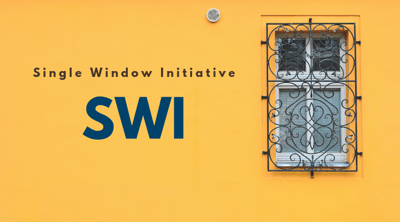Single Window Initiative (SWI) - Survival Guide for Kimberley Process (Rough Diamonds)
The new SWI landscape
The Single Window Initiative means several changes for importers:
- how you need to submit documentation is in flux;

- when that documentation is needed has changed; and
- which documentation is required is also shifting.
Our goal is to help you understand what is expected for the new “how, when, and what” of SWI requirements relating to the items you ship. These updates guide importers through specific commodities or categories of commodities, and the Participating Government Agencies (PGAs) that are affected.
How, when, and what
- Single Window Initiative requires all import documentation to be prepared and submitted before the shipment reaches customs.
- SWI is a new way of submitting documentation. All docs will be submitted using the Integrated Import Declaration (IID). Some of the requirements for how you submit are changing. For example: some documents that needed to be faxed now require an uploaded electronic image or just the document number.
- There may be changes to which documents are required under SWI.
- The launch date of SWI is still unknown, but it’s time to get proactive and adjust your workflow to ensure the paperwork is ready before you ship.
Why importers need to know
Under the new SWI, it’s important that you understand which PGAs are regulating your products. Some products are regulated by multiple PGAs, and the PGAs regulating your products may have changed under SWI.
Additionally, each PGA and the CBSA can issue penalties for incorrect and missing documents. Understanding what information and documentation is needed for clearance will make the clearance process into Canada smoother and more efficient.
Kimberley Process (Rough Diamonds)_SWI_Computer_Series.png?width=400&height=222&name=Kimberley%20Process%20(Rough%20Diamonds)_SWI_Computer_Series.png)
Natural Resources Canada regulates the shipment of rough diamonds. The SWI data elements required for release include:
Certificate type
A KP certificate accompanying a rough diamond shipment is required to meet Rough Diamond program requirements. Having confirmation on the presence or absence of this certificate facilitates the decision-making on clearing the shipment. Note: the KP (Kimberley Process) certificate is the source of all data for the following requirements.
Certificate number
The certificate number appears on the certificate that must accompany the rough diamond shipment in order to clear Customs. The IID process can NOT replace the original KP paper certificate.
Issue date
The presence of a KP certificate accompanying a rough diamond shipment is required to meet Rough Diamond program requirements. Knowing the issue date of the KP certificate is crucial to confirm that the certificate is valid or not, which facilitates the decision-making on clearing the shipment.
Expiry date
The presence of a KP certificate accompanying a rough diamond shipment is required to meet Rough Diamond program requirements. Knowing the issue date of the KP certificate is crucial to confirm that the certificate is valid or not, which facilitates the decision-making on clearing the shipment.
Scanned KPC
The presence of a valid KP certificate accompanying a rough diamond shipment is required to meet Rough Diamond program requirements. Having confirmation that a KP certificate accompanies the rough diamond shipment is crucial to facilitate the decision-making on clearing the shipment. However, the scanned KP certificate does not replace the requirement to inspect the original paper KP certificate to identify potential counterfeiting and confirm that the information presented on the IID and accompanying paperwork matches what is on the KP certificate.
Source: KP certificate is the source of the data (this certificate is provided to the importer or their broker by authorities in the exporting country).
Issuing authority
Canada can only trade in rough diamonds with countries that are members of the Kimberley Process. The issuing authority, representing the country exporting the shipment, is therefore required to facilitate the decision-making on clearing the shipment.
Country of origin (mining)
Canada can only trade in rough diamonds mined within countries that are members of the Kimberley Process. The country of mining origin, is therefore required to facilitate decision-making on clearing the shipment. Mining origin is indicated when the rough diamonds in the shipment have been mined in one country (only one KP member). When rough diamonds in the shipment have been mined in more than one country, the term "Mixed" is used.
Country of origin (mixed)
Canada can only trade in rough diamonds mined within countries that are members of the Kimberley Process. The country of mining origin is therefore required to facilitate decision-making on clearing the shipment. The term "Mixed" is used when rough diamonds in a shipment have been mined in more than one country (more than one KP member).
Number of packages/ parcels
The number of parcels like the value and carat weight of a rough diamond shipment is part of the minimal information required to meet Rough Diamond program requirements. The combination of data provides crucial information to identify the shipment and to understand its nature to facilitate the decision-making on clearing the shipment.
Carat weight
The carat weight of a rough diamond shipment is part of the minimal information required to meet Rough Diamond program requirements. The combination of weight and value provides crucial information to understand the nature of the shipment to facilitate the decision-making on clearing the shipment.
Value in US$
The value of a rough diamond shipment is part of the minimal information required to meet Rough Diamond program requirements. This combination of data provides crucial information to identify the shipment and to understand its nature to facilitate the decision-making on clearing the shipment.
Country of origin
Canada can only trade in rough diamonds mined within countries that are members of the Kimberley Process. The country of provenance of the product is therefore required in order to provide guidance on clearing the shipment. This data element may duplicate the data element of "issuing authority”.
For SWI, being proactive is your best strategy—gather all your information and documentation as far in advance as possible. Importers who know the requirements for the products they’re importing, and understand the new processes under SWI, will have a much smoother import experience.
SWI. It's what we do.

Latest Articles
- Watch out for these extra charges on your freight bill
- Key differences between duty drawbacks and duty refunds for importers
- Mitigating container shortages and rising shipping prices for ocean imports
- How Canadian importers benefit from end use tariff codes and conditional relief
- The benefits of operating as a Non-Resident Importer in Canada
